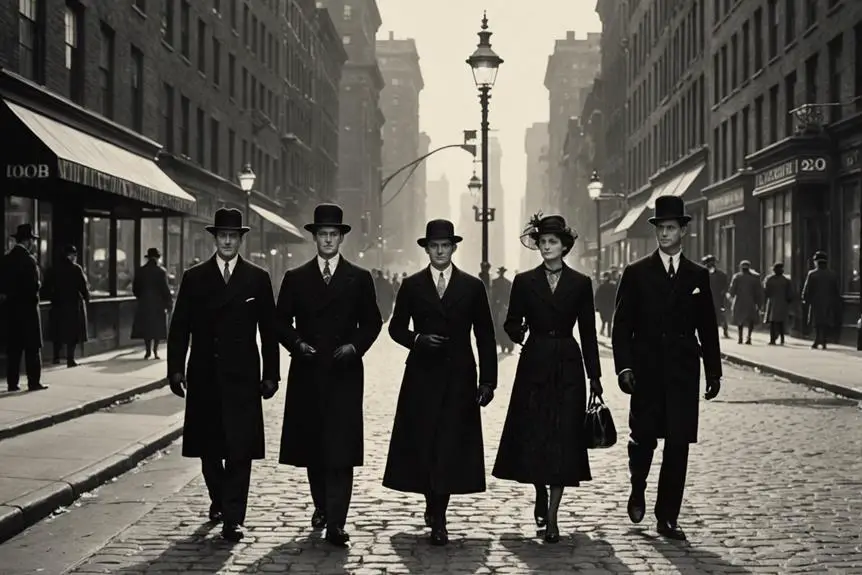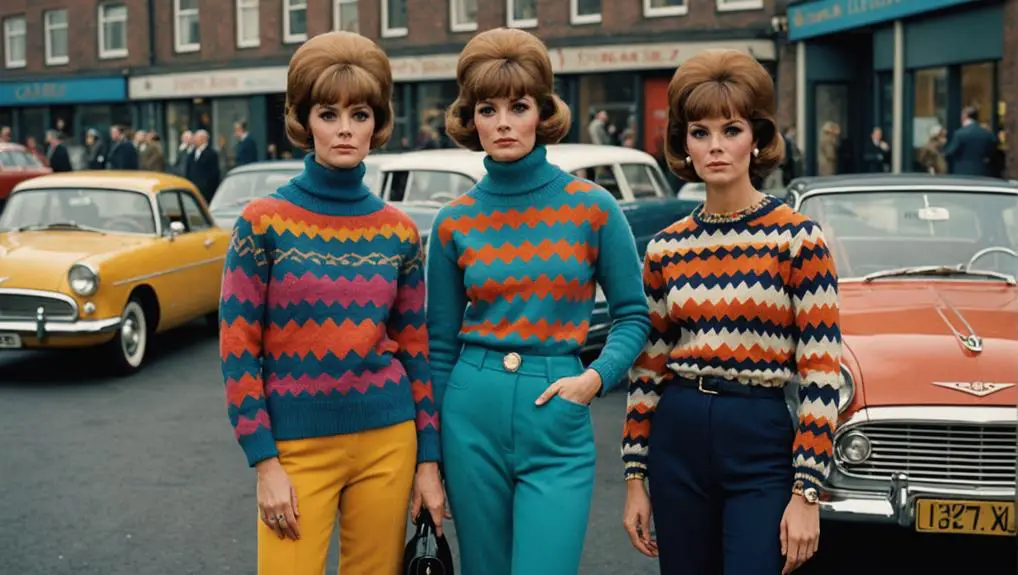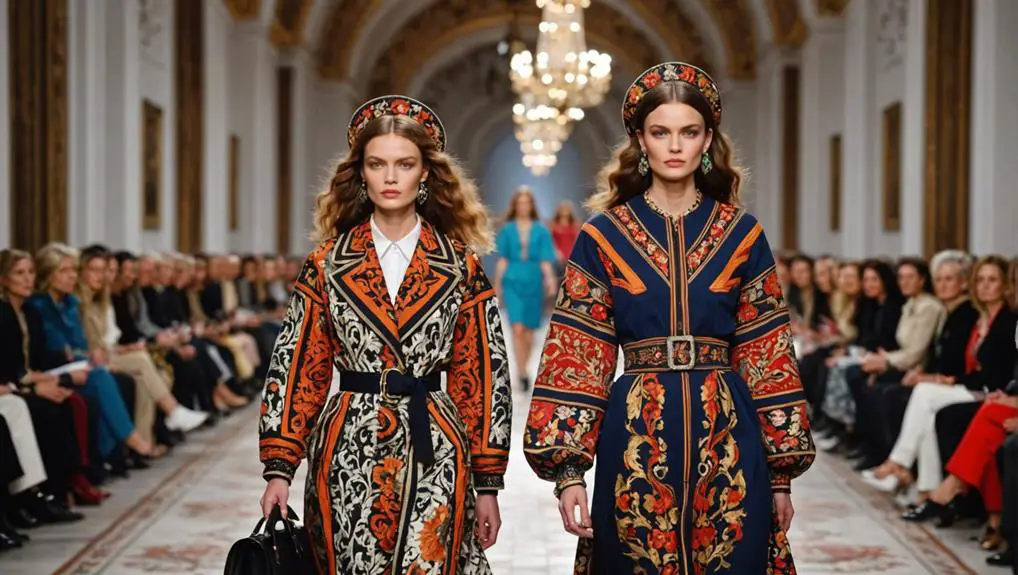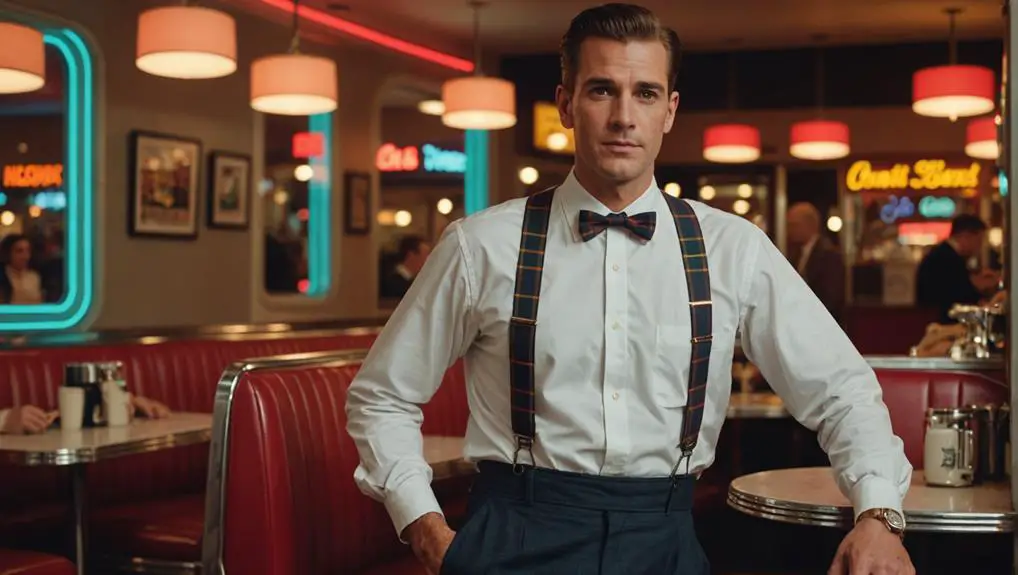You might not realize that the costumes in "The Alienist" play a vital role in conveying the psychological depth of its characters. Each outfit is designed not just for aesthetics but to reflect the social dynamics of the late 19th century, influencing how viewers perceive the characters' motivations and relationships. With meticulous attention to detail, the wardrobe choices reveal layers of complexity that go beyond mere visuals. What might surprise you is how these garments were crafted under unique production challenges, shaping the overall storytelling experience.
Costume Design Inspiration
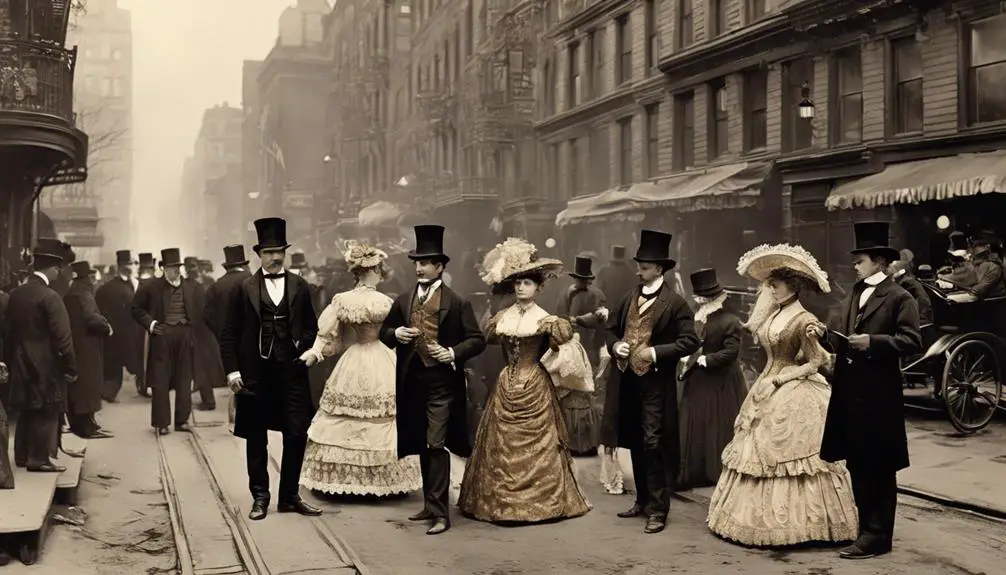
When you immerse yourself in the costume design of 'The Alienist: Angel of Darkness,' you'll notice a fascinating blend of historical and contemporary influences. The series intricately weaves Victorian suiting from the Gilded Age with modern fashion icons like Alexander McQueen and Karl Lagerfeld. This unique approach guarantees that each character, especially the strong and determined Sara Howard, isn't only visually striking but also authentically reflects the era's complexities.
Extensive research was vital; designers combed through old Harper's Bazaars from 1897 and the book "Gilded New York: Design, Fashion and Society" for inspiration. Mood boards created for each actor showcased this blend, emphasizing character representation through attire.
Sara Howard's costume design stands out with innovative accessories, like a stylish belt-like piece for her gun, merging practicality with period authenticity. This detail draws from the avant-garde style of Ann Demeulemeester, highlighting the character's resourcefulness.
With approximately 300 suits crafted for the series, the attention to detail and craftsmanship shines through, making the costumes an essential part of storytelling. The result is a visually enchanting experience that brings the past to life while resonating with modern viewers.
Character Wardrobe Evolution
The evolution of Sara Howard's wardrobe in 'The Alienist: Angel of Darkness' poignantly reflects her journey from a secretary to the head of a detective agency. As you follow her transformation, you'll notice how her costumes shift from traditional, restrictive attire to a more dynamic, empowered style.
Sara's distinctive culottes, for instance, not only enhance her mobility but also symbolize her break from conventional gender roles, showcasing a tougher yet feminine approach to fashion.
The introduction of striped outfits, inspired by Karl Lagerfeld's designs, adds a modern twist to her historical wardrobe, blending past and present influences seamlessly. You'll appreciate the thoughtful details, like the belt-like accessory that allows Sara to carry a gun, merging practicality with period authenticity.
Moreover, the adjustments made to her costumes, such as reducing the puffy mutton sleeves, effectively depict her maturation and the seriousness of her role within the narrative.
Mood boards created for Sara incorporate both historical and contemporary elements, ensuring her wardrobe aligns beautifully with her character development throughout the series. Each costume reflects her growth, making Sara a compelling figure you can't help but admire.
Unique Accessories and Functionality
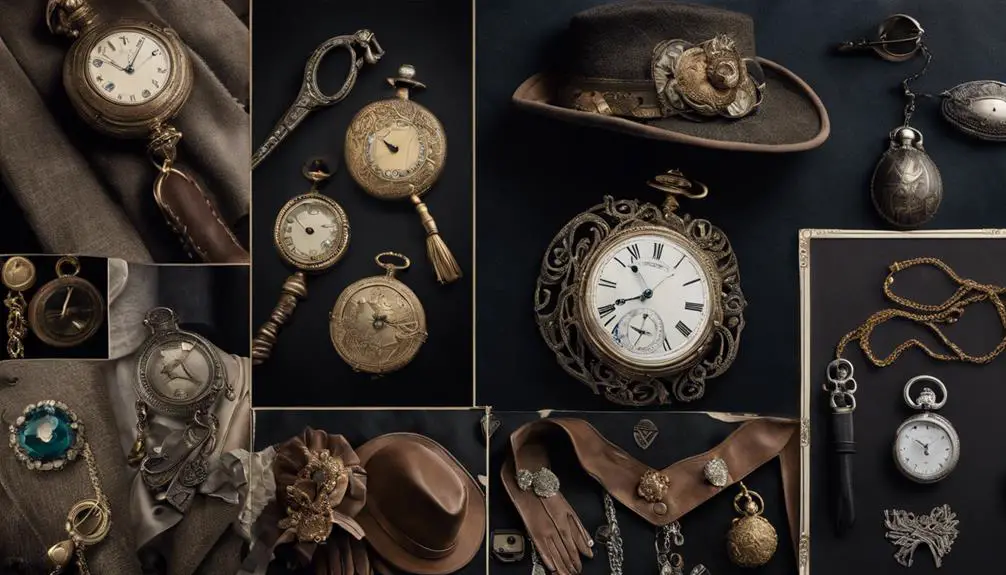
Throughout 'The Alienist: Angel of Darkness,' unique accessories play an essential role in enhancing both character functionality and authenticity. One standout piece is Sara Howard's belt-like accessory, designed to carry a gun and bullets, which merges practicality with period authenticity. This functional design not only emphasizes her character's resourcefulness but also reflects the show's commitment to historical accuracy, similar to how vintage Ralph Lauren items are characterized by their distinct features and craftsmanship. Inspired by Ann Demeulemeester's fashion show, the accessory showcases a blend of historical aesthetics and modern usability that adds depth to Sara's character.
Furthermore, the wardrobe team tailored unique accessories to meet the specific needs of each character, ensuring that costumes served practical purposes while maintaining an authentic look. This thoughtful integration of functional elements into costume design allows for greater movement and expressiveness, enabling actors to embody their roles fully.
For instance, the balance between historical accuracy and the demands of the characters' roles enhances the overall storytelling, making the characters more relatable and engaging.
In 'The Alienist,' each unique accessory not only captivates the eye but also enriches the narrative, reminding viewers that every detail matters in building a compelling story.
Production Challenges Faced
Production challenges in "The Alienist" were significant, particularly with the logistics of creating period-accurate costumes. The majority of the clothing was crafted in Budapest, where local expert tailors worked tirelessly to guarantee authenticity and craftsmanship that truly brought the late 19th century to life.
However, language barriers posed additional hurdles, often requiring team members to rely on sign language to communicate effectively.
With approximately 300 suits produced for the series, the attention to detail was immense, reflecting the dedication to the period drama's visual appeal. Hats were crafted by the talented Hungarian hatmaker Gizzy, while other costume elements were sourced from Rome's Pieroni Workshop, showcasing a diverse production process that spanned across Europe.
Unique fabrics were meticulously sourced from local shops, emphasizing the commitment to finding authentic materials that would resonate with the era's style.
These production challenges not only tested the team's problem-solving skills but also highlighted their unwavering passion for creating a visually stunning series. The result? An enchanting blend of artistry and historical accuracy that made "The Alienist" a standout in the domain of period dramas.
Costume Accuracy Adjustments
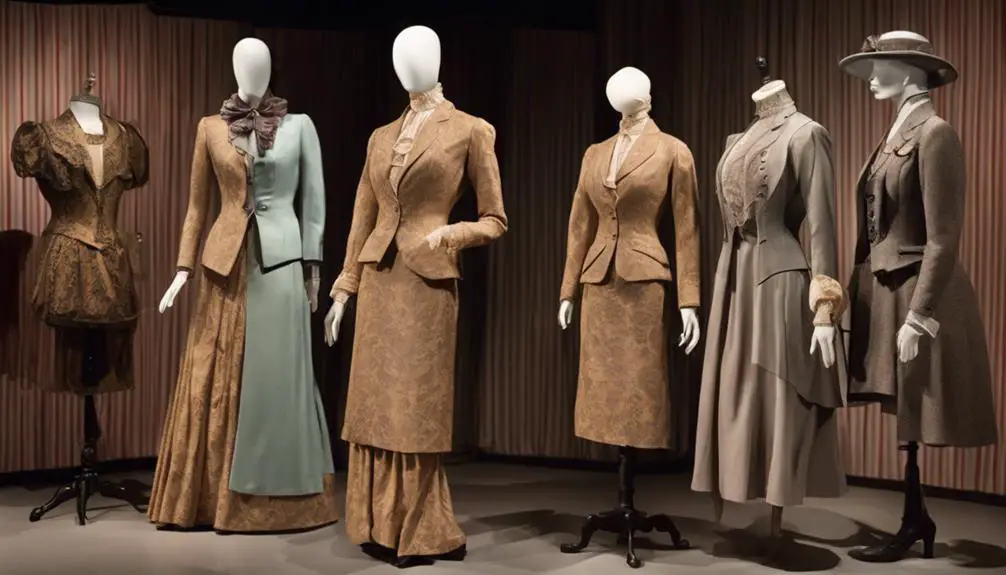
Adjustments to costume accuracy were an ongoing focus for the design team in "The Alienist." They made specific changes to elements like the puffy mutton sleeves, reducing their size to better reflect the evolving seriousness of the characters.
The costume designer took a thoughtful approach, blending historical authenticity with touches of modern fashion trends. For instance, while corsets played a notable role in the era's clothing, the show faced some criticism for depicting characters without essential undergarments like chemises, which were common in the 1890s.
To guarantee that each character's wardrobe resonated with their unique arcs and personalities, the team custom-made unique clothing pieces, paying meticulous attention to detail in fabric selection and construction.
This dedication to authenticity enhanced the narrative and visual storytelling of the series, allowing viewers to connect deeply with the characters. By balancing period accuracy and contemporary sensibilities, the design team created an engaging aesthetic that captured the essence of the time while still appealing to modern audiences.
Ultimately, these costume adjustments contributed considerably to the show's immersive atmosphere, making it a visually stunning experience that resonates with viewers today.
Main Characters and Their Styles
The main characters in "The Alienist" each showcase distinct styles that reflect their personalities and social standings. Dr. Laszlo Kreizler, for instance, is often seen in tailored suits with dark hues, embodying his intellectual nature and serious demeanor. His clothing choices not only highlight his profession as a psychologist but also convey a sense of authority and focus.
In stark contrast, Sara Howard's wardrobe features a blend of feminine yet practical attire, including striking culottes and striped outfits inspired by Karl Lagerfeld. These fashion choices symbolize her evolution from a secretary to the head of a detective agency, showcasing her determination and independence.
John Schuyler Moore adds a bohemian flair to the mix, sporting eclectic accessories and brocade vests that emphasize his artistic personality. His style reflects a creative spirit, setting him apart from the more formal attire of Kreizler and Howard.
The victims' costumes starkly contrast with the main characters' distinguished outfits, illustrating their social class and vulnerability.
Supporting characters also display a range of styles, representing diverse social backgrounds, enriching the show's historical authenticity and depth. Each character's attire plays an essential role in bringing the narrative to life.
Impact on Viewer Experience
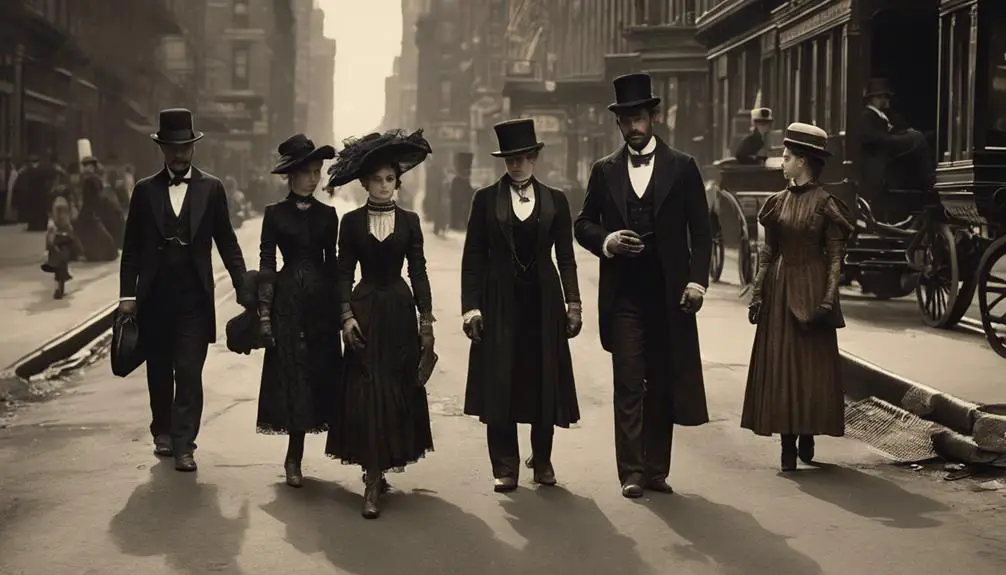
Costumes play a significant role in shaping your experience while watching "The Alienist." By accurately reflecting late 19th-century fashion, the intricate designs pull you deeper into the show's historical setting. Each character's wardrobe not only showcases their social status but also highlights their personal evolution throughout the series.
When you see Dr. Kreizler's tailored suits contrasting with the more flamboyant outfits of other characters, you can sense their distinct journeys and challenges. The attention to detail in fabrics, colors, and silhouettes enhances the authenticity of the narrative, making it resonate more with you as a viewer who appreciates period accuracy in historical dramas.
This attention to historical detail mirrors how design evolution can impact brand perception, as seen with iconic labels like Burberry. The costumes serve as a visual storytelling tool, allowing you to connect emotionally with the characters, fostering a sense of empathy and understanding.
Moreover, the blend of modern design sensibilities within these historical frameworks creates a bridge that links your contemporary experience to the characters' lives. This connection not only makes the story more relatable but also sparks conversations on social media about fashion choices, influencing current trends and igniting your curiosity about the historical context behind each costume.
Recognition and Awards Received
Numerous accolades have come the way of "The Alienist," especially for its outstanding costume design, which underscores the series' dedication to authenticity and creativity. The show received nominations for various costume design awards, highlighting the meticulous attention to detail that resonates throughout the series. Critics have praised the costumes not only for their historical accuracy but also for how they elevate the narrative and enhance character development.
This recognition and these awards reflect the costume design team's commitment to immersing viewers in the late 19th-century setting, drawing acclaim from both audiences and fashion experts. The show's costumes have set a new standard for contemporary television, influencing how period pieces are approached in today's productions.
Positive reviews for the costumes contributed considerably to the overall critical acclaim of "The Alienist," reinforcing its popularity among fans of historical dramas.
As you explore the world of "The Alienist," you can appreciate how these award-winning designs not only define characters but also transport you to a different time, making the viewing experience all the more enriching. The costume design truly plays a pivotal role in the series' success and enduring appeal.
Frequently Asked Questions
Who Is the Costume Designer for the Alienist?
The costume designer for "The Alienist" is Michael Kaplan. He draws costume inspiration from extensive research, ensuring historical accuracy while blending it with modern fashion elements, creating unique garments that enhance character development throughout the series.
Was the Alienist Based on a True Story?
Isn't it fascinating how true crime can weave historical accuracy into storytelling? "The Alienist" is inspired by real events, blending fictional elements with actual figures from 19th century New York, creating a compelling narrative rooted in history.
Where Was the Alienist Filmed?
You'll find that "The Alienist" was filmed primarily in Budapest, which perfectly mimicked New York's late 19th-century vibe. The city's neo-Gothic architecture provided stunning filming locations, enhancing the show's historical accuracy and visual storytelling.
Is the Alienist Doing Season 3?
You're wondering about season three of "The Alienist." There's no official news yet, but fans speculate on potential plotlines that could enhance character development and historical accuracy, should the series continue.
